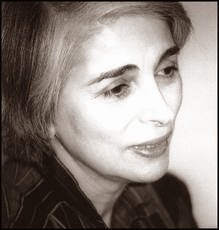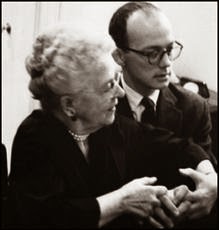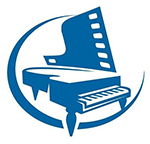Abby Whiteside on Piano Playing : Indispensables of Piano Playing – Mastering the Chopin Etudes and Other Essays
It was a crisp November day in Manhattan as I stood in front of No. 8 East 83rd Street. The holiday hustle and bustle was no match for the anticipation of my first lesson with Sophia Rosoff. Actually, it’s roots began short of a year ago, when I decided to seek out a teacher that could bring my playing to another level. The professional relationship moved me forward into a pedagogy class, which led me on a journey I hadn’t expected. I have never been satisfied to play very well for a teacher, but rather have rather strived for more artistic, fresh performances. Many different physical ideas had been introduced or discussed in lessons. During this time, I came to the realization that there is a tremendous difference between “telling” a student how to move and true physical transference from teacher to student. I came to the book by Abby Whiteside, On Piano Playing, a compilation of “Indispensables of Piano Playing”, and “Mastering the Chopin Etudes and Other Essays”. Anxious to add to my repertoire of practice techniques and physiology of playing the piano, I was hopeful that I would find connections in her concepts to what I have already been physically experiencing in my lessons. Now I stood on the steps of one of her last surviving students–Sophia Rosoff.

Pianist Sophia Rosoff
After digesting the meaning of so many of the concepts, I called Sophia asking for her assistance in clarifying some of the more complex details of the book. “They are just words in a book,” she said. “If you can make your way to New York, I can show you what she means.” I found Sophia a most gracious woman. Now 87 years old, she still manages to teach almost four hours a day. Upon our first meeting that November day, she told me the story of how On Piano Playing was published. Abby Whiteside’s final year, 1956, was spent in California. During her final days, she called Sophia, her former student, and invited her to come for a visit. It was during this visit that Abby expressed her wish to Sophia that she carry on her research and discoveries. All the drafts of her writings done throughout her career were assembled, and Sophia and another former student, Joseph Prostakoff, began the arduous task of publishing,, and editing, as well as continuing the development of her work. The original manuscripts show that her ideas on the physical movement at the piano were constantly evolving up to the end of her life. Sophia Rosoff has carried that work ethic throughout her own teaching career. Sophia, as did Abby, devoted her teaching career to the prevention of injuries that many pianists suffer at the piano. In the forward of the book, Sophia states, “The injuries that many performers sustain could be avoided if they had the knowledge of how fingers, arms, and torso coordinate, or how one balances on the chair seat, and of how all movement happens from the center to the periphery.”1 During a master class at Piano Texas, 2006, former Van Cliburn Competition winner Jose Fugali said, “It is our job as pianists to make playing easy.” It would seem compelling evidence from two such experienced sources, that the world of professional pianists is riddled with pain, injury, and long, eight hour practice days all in the pursuit of playing the greatest works of the piano literature.
My goal in pursuing studies with Sophia Rosoff were driven by my desire to incorporate the principles of the book and develop a strategy for teaching these principles to my students from the very first lesson.
Abby Whiteside spent most of her teaching career in her private studio in New York City. Focusing the majority of her time with professional students, she admitted to having little experience with younger students, particularly elementary age children. Many of Whiteside’s concepts, however, can be easily and successfully developed for productive use in the independent piano studio. I have used my private studio as an outlet for discovery of many of these principles with students from ages five through high school level. I found that some many of her concepts can successfully taught from the first lessons, and can enhance the speed and freedom with which older students learn new repertoire.
Transference from Teacher to Student:
I believe the most important concept the Whiteside has to offer is that of transference from the teacher to the student. There is an enormous difference between telling a student how to move and helping the student to feel changes physically in their playing. Whiteside stressed lots of joint playing and repetition in her sessions with students. Based on descriptions of her teaching technique, and my own experiences in lessons this year, I decided to develop this approach in my teaching. Although my undergraduate teacher often had me “ride on his wrist”, it’s purpose was almost exclusively to promote wrist rotation. Explanations of “upper arm” and body motions fall short of teaching students how to feel and integrate these motions successfully into their own playing. Whiteside used several strategies that I incorporated with students of all ages. The first was to sit side by side with my student, demonstrating with my right hand, while I gently grasped the student’s right arm with my left hand. As we played together, I gently moved their upper arm forward and backward as appropriate. I found this technique the most successful with my youngest students, while standing behind my older students and guiding their arms achieved the same effect and seemed to be more successful due to the similarities of our height. Another transference strategy was that of lacing my fingers between my student’s fingers to check for tension and key bedding while playing. As I experimented in the studio, I discovered that the opposite of Whiteside suggests can also be successful. Reasoning that my students could lace between my fingers as I demonstrated the immediate release of weight after the fingers play, I was also able to demonstrate how they were playing, allowing them to feel the difference between my fingers. My youngest students love to “ride”. After experiencing this approach in a few lessons, they now instinctively “latch on” as soon as I begin a demonstration. The challenge in lacing between students fingers comes when the teacher,s fingers and hand are larger, or when working with tiny, five and six year old hands. My solution to this problem was to lightly place the tips of my fingers to the base of the student’s fingers, inside the palm. The same effect can be achieved by using the underside approach. Applying a small amount of gentle pressure upward from the underneath side can help the student feel the release of weight into the key and help them achieve a feel for the escapement level of the piano without technical explanations.
Phrase-Wise versus Note-Wise Practicing:
The second most important concept that Whiteside’s book has to offer, is the process of “phrase-wise” versus “note-wise” learning. Whiteside convincingly points out that the traditional thirty minute lesson limit’s the possibility of training a young student’s ear appropriately. Many of the tasks involved in true ear training take time and do not necessarily provide the immediate “proof of learning” that students and parents can appreciate. Given the time constraints of most private music studios, teachers more often that not assign pieces, leaving the student to venture into the world of practicing on their own. Unless the student is truly gifted and in possession of musical gifts beyond their years and maturity, they will instinctively “read the notes” anew each practice session. Such practice is detrimental to the development of musical sensitivity in phrase structure and tone production.
Using the basic concepts of transference just discussed, Whiteside advocates playing a phrase with the students, using repetitions to move the student beyond the reading phase of the notes to blending the sounds into a musical concept. I began using this concept almost exclusively for all levels of students. I discovered that the younger the student, the less explanation and the more playing we did together. It is humbling to realize that the less I talk, the more my youngest students gain. Explanation of concepts precede the playing of duets with my older students, as I endeavor to encourage the same practice techniques at home sessions. Students often seemed relieved to find that they could read less and accomplish more.

Abby Whiteside teaching in her New York City apartment, circa 1940
Learning with the Rhythm of Form:
It would be impossible to separate phrase practice from one of Whiteside’s most important practicing devices in the book- learning in a rhythm. All repetitions should be done using the rhythm of form, not the traditional counting of individual note values. Such “counting” does not allow the student to feel the rhythm in gestures, and thus cannot help the student use appropriate gestures. Since practicing with our students is critical to the success of the rhythm of gesture, it is the teacher’s responsibility to patiently play the phrase with the student over and over, keeping each repetition in rhythm, with rests between these repetitions continuing the rhythm of form. As the student catches the rhythm in their body, they will begin to play successive repetitions with gradual freedom. Each lesson should reinforce the concepts of learning in rhythm until the student internalizes the feelings and begins to assimilate appropriate rhythmic body gestures into their playing naturally. Whiteside sums up the importance of learning in a rhythm beautifully when she states, “No more devastating habit can be formed than that of associating the rhythm of playing with the action for producing single tones” (p. 171)
